- Call us: 01444 237070
- Contact Us
- Stores
- Sign In / Register
-
- Back
- Used Cameras
- Used Accessories
- Used Lenses
- Used Video
- Used Film Equipment
- Used Stock Alert
- Used Blank Test
- Sell or Part Exchange
- Used Clearance
- Recently Added Used Equipment
- Park Picks
- All Used Black Friday Deals
- Faulty
- Trade-In
- Blog
- New in
- Call us
- Contact us
- Stores
- Sign in
- Categories
- Tips & Inspiration
- Reviews
- News
- Events
- Features
- Buying Guides
- Competitions
Nikon Z8 Review
Almost a year has passed since the Nikon Z8 release date of May 10, 2023, coinciding with my last outing to capture bluebells and wildflowers for the Nikon Z MC 105mm F/2.8 VR S Macro lens review.
The Nikon Z8 is Something Special | Nikon Z8 Video Review
This anniversary inspired me to take the Nikon z8 camera out for a comprehensive, hands-on reevaluation, and I was genuinely excited at the opportunity to shoot with this model. So why not join us as we explore how the camera holds up in 2024 for our refreshed Nikon Z8 review.
As this is the true successor to the D850, as well as the flagship Z9’s stablemate, we’ve kept the Z8 Vs Z9 Vs D850 specs comparison. It’s also important to note that both the Z8 and Z9 have benefited from firmware updates, significantly enhancing the performance and capabilities of these mirrorless Z cameras, which we discuss in more detail below.
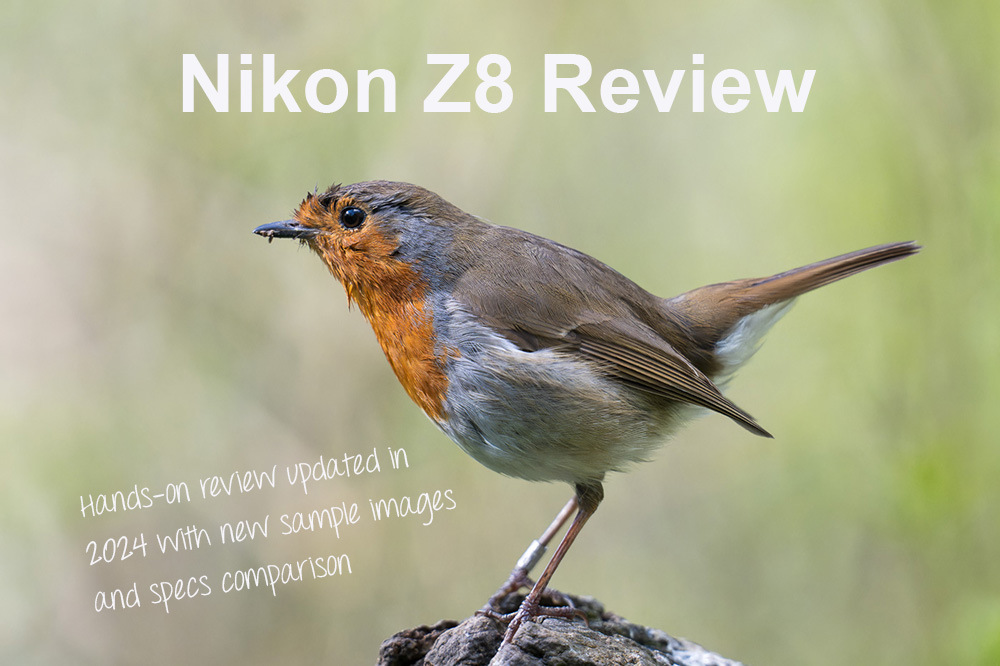
Nikon Z8 Sample Images
Having been inspired by Wildlife Day and having two accompanying telephoto lenses, the Nikon Z8 was primarily put to the test by Nick Dautlich for nature and bird photography, as well as capturing some environmental portraits, landscapes and close-up shots.
Most of the photos were taken in Aperture Priority or Manual mode, using Auto ISO with a minimum shutter speed selected. Subject detection was always on, AF-C on (Continuous AF) aside from landscapes, and all of the images are edited, as I hoped to see how the RAW files respond to basic Lightroom edits.
It turns out that Nikon’s 45 megapixel sensor captures especially nice RAW files to work with, which are malleable, provide latitude for pulling up shadows and render natural colours with both of the telephoto lenses I was using.

Dunnock bird captured with Z 180-600mm f/5.6-6.3 VR at 430mm. Camera settings 1/2000 sec. f/6. ISO 6,400
Nikon Z8 price
A year post-launch and the Nikon Z8 UK price remains close to its initial £3,999.00 cost, although seasonal sales occasionally offer discounts. You may find a Z8 used Nikon camera at a slight reduction, but these tend to be snapped up quickly, as this is rightly a very popular camera.
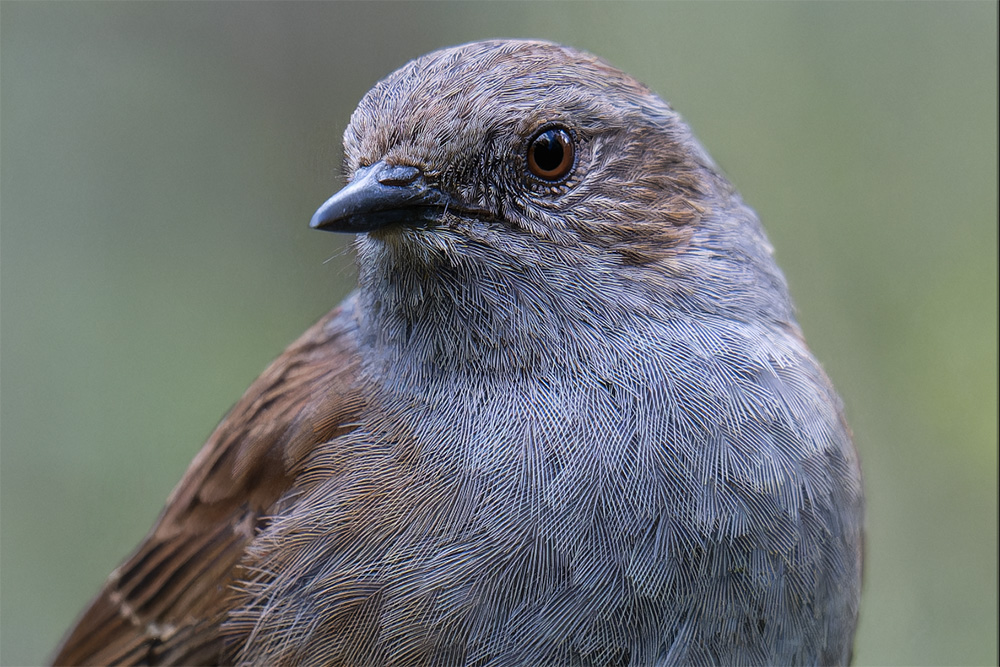
100% crop of the Dunnock bird image showing incredible detail from the 45MP sensor
Nikon Z8 key specifications
As one of the most advanced mirrorless cameras on the market the Nikon Z8’s key specifications are well worth noting. The camera brought several firsts to the Nikon system, and there’s still plenty to get excited about in 2024, whether you’re a pure photographer or hybrid creator.
- Nikon developed 45 megapixel full-frame stacked CMOS sensor
- The latest Expeed 7 image processor
- Deep learning intelligent AF subject recognition
- 20fps RAW burst with 1000+ image buffer and up to 120fps JPEG burst
- Completely blackout-free EVF with zero lag
- Supports HEIF image format (smaller file sizes with 1 billion more colours than JPEG)
- 8K/60p and 4K/120p video up to 12-bit with N-Raw and ProRes RAW (internal)
- 24-bit linear PCM audio
- 1x XQD/CFexpress Type B slot and 1x SD card memory card slot
- First Nikon camera with USB-C to ethernet connection
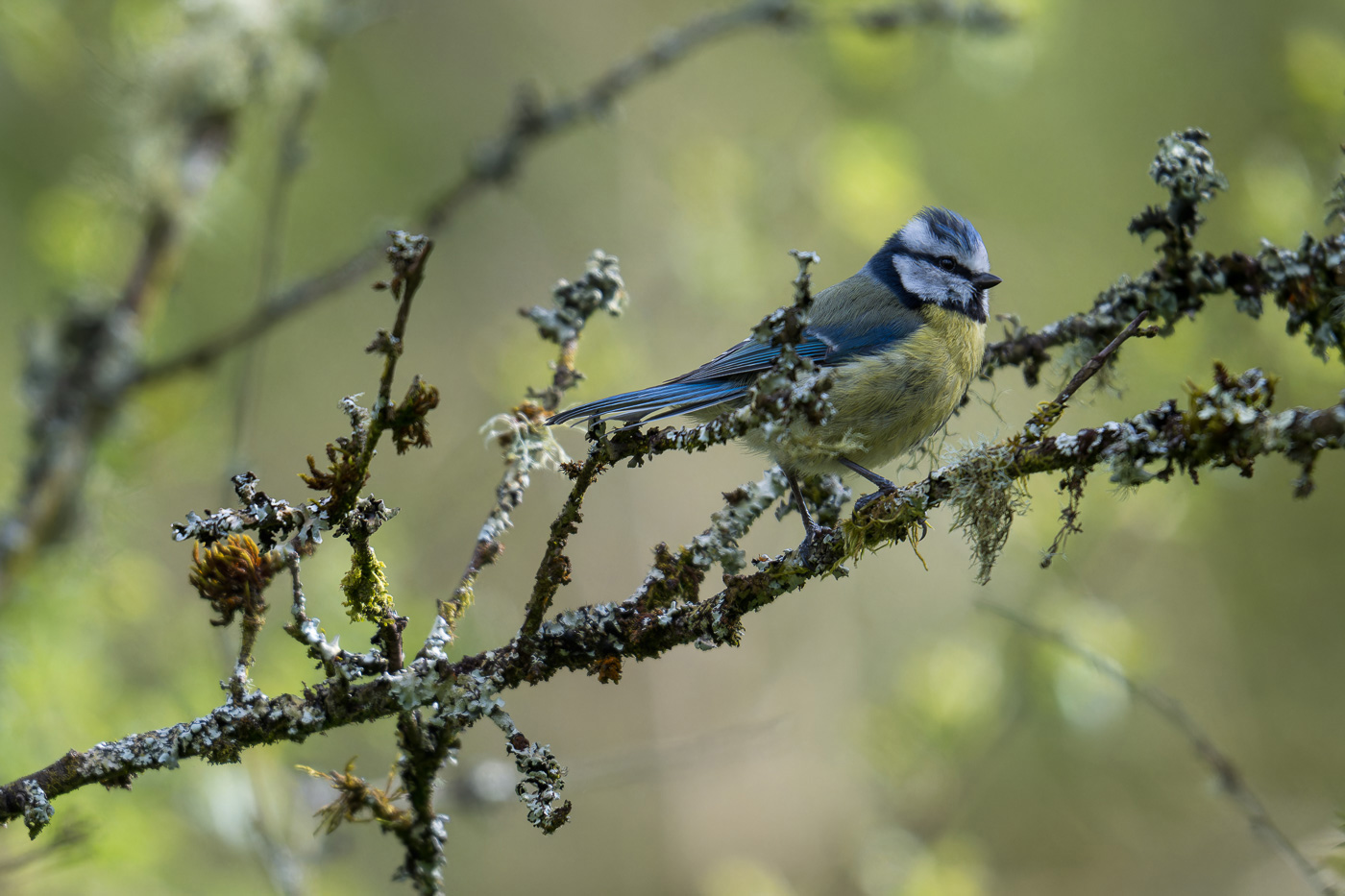
Bluetit bird captured with Z 180-600mm f/5.6-6.3 VR at 600mm. Camera settings 1/2500 sec. f/6.3. ISO 2,000. The AF captured the bird without any hitch
Nikon Z8 firmware updates
Nikon is very proactive in enhancing cameras with new features through firmware updates. The latest Nikon Z8 firmware update version 2.00 from February 2024 introduced significant improvements like Auto Capture, 180MP Pixel Shift images, and the addition of birds to the AF subject detection options, among many other improvements.
Updating camera firmware can feel like receiving a free upgrade, and it's always a welcome improvement. Don't forget to check for lens firmware updates as well. Manufacturers can enhance lenses in various ways, including focusing precision, drive modes, and stabilisation capabilities, particularly when they release new compatible cameras.
Visit the Nikon download page for full details of all current available updates.
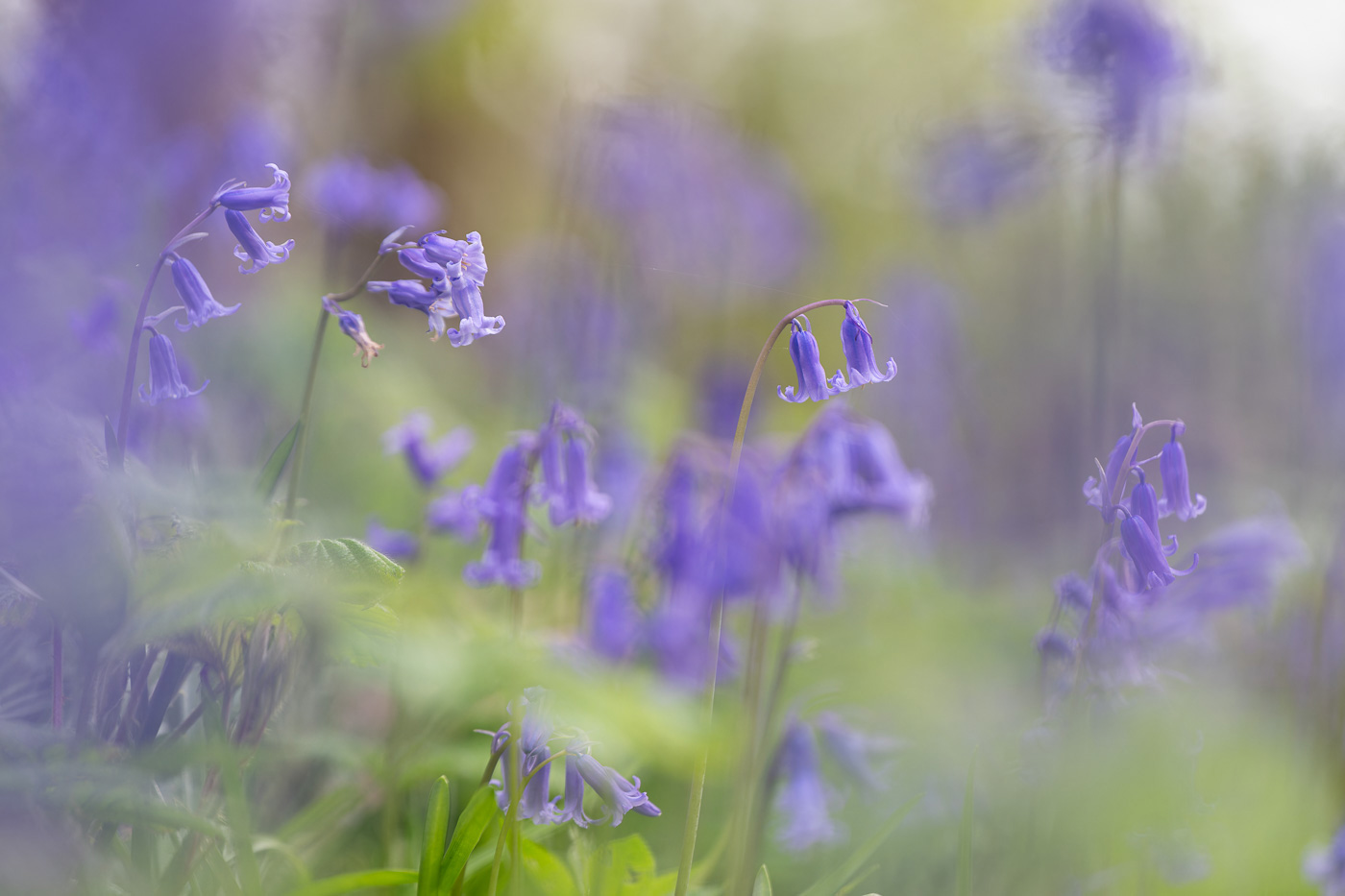
Bluebells captured with the Z 70-180mm f/2.8 at 180mm. Camera settings 1/320 sec. f/2.8. ISO 560
Nikon Z8 bird settings for small woodland birds
I asked Bruno Murari's advice for capturing small woodland birds in flight and his suggestions included setting Focus tracking lock to erratic, and switching stabilisation between Normal for static and Sport for Panning while shooting with the Nikon Z 180-600mm f/5.6-6.3 VR, which featured as the only non S-Line model in our ultimate guide to Nikon super telephoto lenses.
Key bird photography settings included:
- Bird subject detection selected (version 2.00 firmware)
- All AF points engaged (set to wide, although sometimes 3D was used)
- Continuous high speed 10/20fps burst RAW
- Pre release 0.5 sec was occasionally used (JPEG only)
- Auto ISO with 2000/2500 minimum shutter speed
- Focus tracking lock on (3) Steady and erratic depending on the situation
Many of the other camera settings were left at their default values.

Butterfly captured with the Z 70-180mm f/2.8 at 135mm. Camera settings 1/500 sec. f/4 ISO 220
Nikon Z8 handling and ergonomics
At 910g the Z8 is a chunky camera, with a design no doubt intended to appeal to photographers moving from a DSLR. During my time shooting I came to appreciate the deep grip and sturdy build, which was noticeably larger than the many full-frame cameras we’re accustomed to.
In the field the Z8 handled extremely well, even when paired with the large Z 180-600mm f/5.6-6.3 VR lens, but equally with the more compact Nikon Z 70-180mm f/2.8 lens. The body grip is very comfortable to handhold and I especially appreciated the 4-axis tilting LCD touchscreen for low angle shots, which is clear, bright and intuitive to use.
Overall the Z8 is a very responsive camera, with a fast startup time, adept focusing and an all round snappy experience. The Expeed 7 is a multi-processor system on a chip, which seems noticeably quicker than the previous generation processor, and I was never waiting for the camera to catch up, nor did I notice lag or blackout when shooting through the viewfinder.
When capturing wildlife or fast paced action a blackout-free EVF is especially useful, and the Z8 gives users a real advantage thanks to this feature.
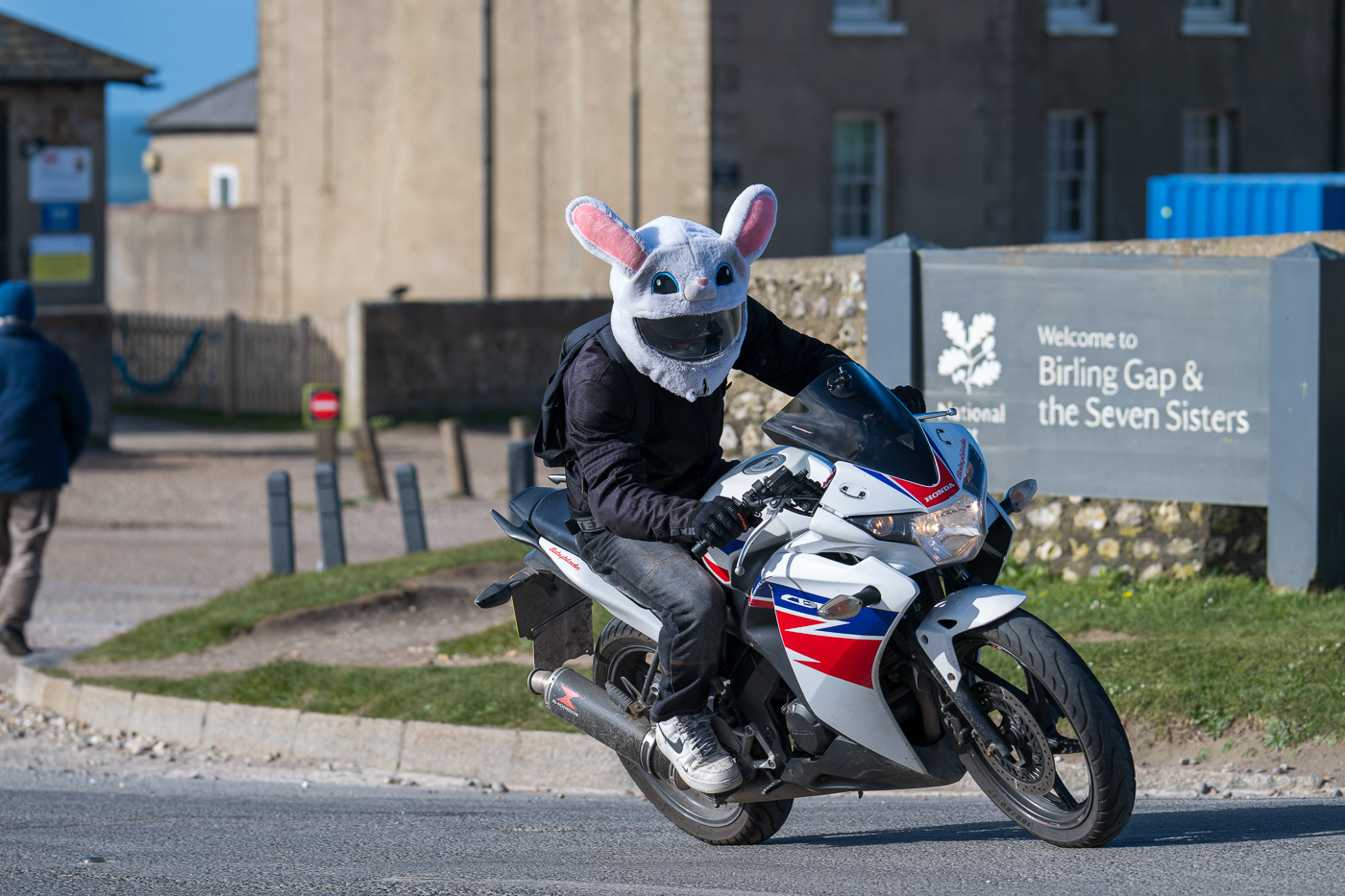
Motorbike in motion captured with Z 180-600mm f/5.6-6.3 VR at 180mm. Camera settings 1/2000 sec. f/5.6 ISO 450
There aren’t tons of new buttons to figure out and Nikon has kept a familiar layout, which will work with existing memory muscle to anyone coming from within the ecosystem. The rear panel has a quick menu access info button, and everything else is where you expect it to be on a Nikon body, making the switch reasonably straightforward if you’re coming from a DSLR.
Interestingly, the Z8 drew some attention when used in public, eliciting comments about its professional appearance. Take that as you will, but it’s a first for me and testament to the different aesthetics which Nikon has carved out for this body.
Turning off the body while walking around helped mitigate its most noticeable drawback – rapid battery depletion. Although the Nikon Z8 battery life is comparable to similar cameras, it's far from outstanding, and I experienced the battery running out on two occasions. The answer is of course to pack at least one or two spare Nikon EN-EL15C batteries. Problem solved.
This is a key advantage of the flagship Z9, which boasts superior performance thanks to a larger battery, boasting a CIPA rated 700 shots, compared to 340 for the Z8.
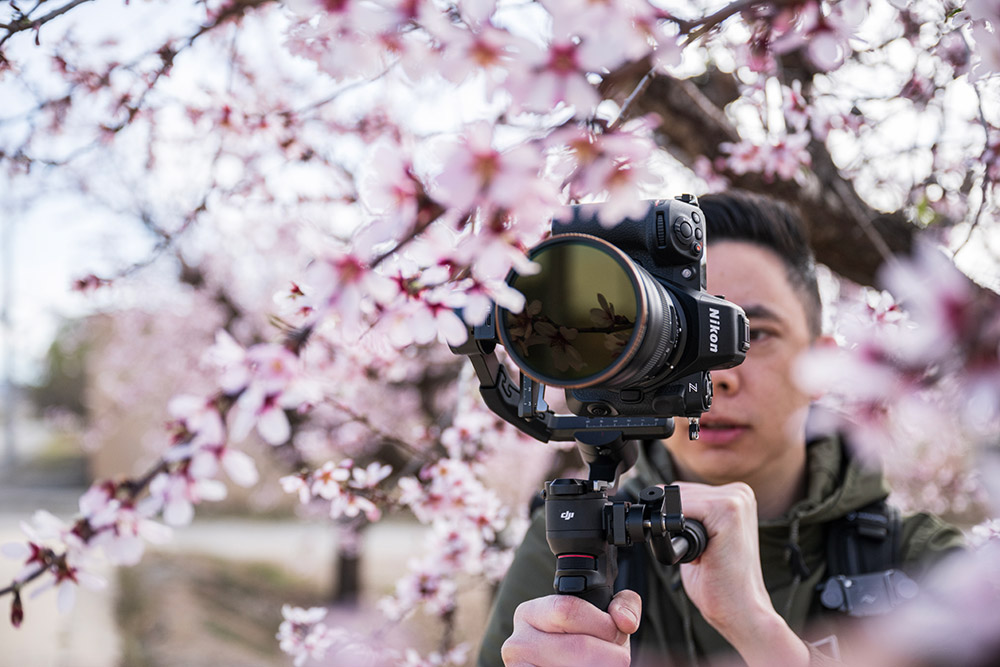
Most notable features for content creation
It’s instantly clear that the Nikon Z8 is more than simply a high-speed sports camera, packing advanced hybrid features to make it easier to capture both stills and movie content. These include:
- Four-axis tilting monitor for difficult angles and more flexible framing
- An array of built-in video quality options including ProRes RAW, 422 HQ and N-Log
- Video tools such as focus peaking, zebra stripes and waveform
- Timecode linking, custom AF tracking and linear focus support for video
- Creative picture modes for Long Exposure, Focus Shift, Motion Blend and Multiple Exposure
- Deep learning AF subject tracking of people, cat, dog, bird, car, motorbike, bicycle, train, airplane
- Up to 20fps burst shooting in RAW with 50+ second buffer
- The camera is totally silent thanks to having no shutter, which can be eerie when firing 120fps without a sound!
- When recording movies you can capture over two hours in 4K/60 and 90 minutes in 8K/30
Many of these features are shared with the more expensive Nikon Z9, which includes the same processor and sensor combination, within a larger pro-size gripped body.
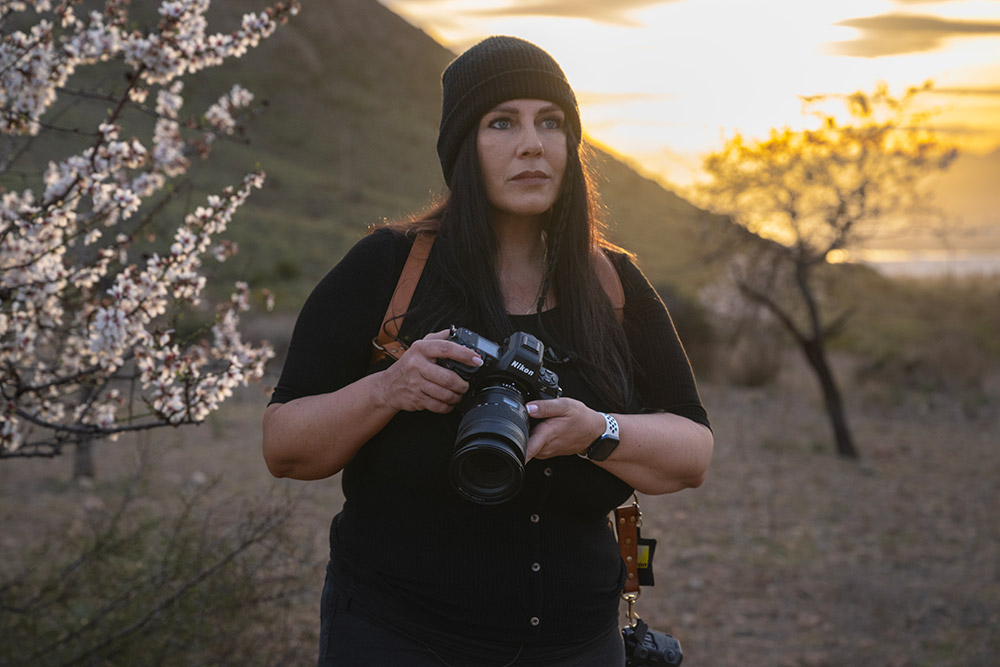
Nikon Z8 Vs Z9 Vs D850 specs comparison
A specs comparison between the Nikon Z8 vs Z9 vs D850 (DSLR) demonstrates just how powerful this full-frame camera is and what it can do to help you capture ever-more impressive stills and movies.
| Nikon Z8 | Nikon Z9 | Nikon D850 | |
| UK Price | £3,999.00 | £5,299.00 | £2,799.00 |
| Sensor | 45MP full-frame stacked CMOS | 45MP full-frame stacked CMOS | 45.7MP full-frame CMOS |
| Processor | EXPEED 7 | EXPEED 7 | EXPEED 5 |
| Max Video Reolution | 8K/60p, 4K/120p, ProRes RAW | 8K/60p, 4K/120p, ProRes RAW | 4K/30p, Full HD/60p, NA |
| Max Audio Resolution | 24-bit, 48kHz Linear PCM | 24-bit, 48kHz Linear PCM | 16-bit, 48kHz Linear PCM |
| Shutter lifecycle | No shutter | No shutter | 200,000 |
| ISO range | Lo1, 64-25,600, Hi 2 | Lo1, 64-25,600, Hi 2 | 64-25,600 +-1 EV |
| File formats | RAW (including high efficiency), JPEG, HEIF 10-bit | RAW (including high efficiency), JPEG | RAW, JPEG, TIFF |
| AF points | 493 points, 90% coverage (horz., vert.) | 493 points, 90% coverage (horz., vert.) | 153 point dynamic-area AF, 3D-tracking, group-area AF |
| AF detection range | EV -7 to 19/EV -9.0 with starlight view | EV -7 to 19/EV -9.0 with starlight view | -4 to +20 EV |
| Subject detection | People (torso, head, face, eye), animals (dog, cat, bird), vehicles (car, bike, bicycle, train), airplane | People (torso, head, face, eye), animals (dog, cat, bird), vehicles (car, bike, bicycle, train,), airplane | Face-priority AF (auto) |
| AF modes | Pinpoint, single-point, dynamic-area (S, M, L; in photo mode only), wide-area (S, L, C1, C2), auto-area AF, 3D-tracking (in photo mode only), subject-tracking AF (in video mode only) | Pinpoint, single-point, dynamic-area (S, M, L; in photo mode only), wide-area (S, L, C1, C2), auto-area AF, 3D-tracking (in photo mode only), subject-tracking AF (in video mode only) | Dynamic-area AF, 3D-tracking, group-area AF |
| Continuous shooting | 20 fps RAW, High-Speed Frame Capture+ (30fps / 120 fps in JPEG, Pre-Release Capture) | 20 fps RAW, High-Speed Frame Capture+ (30fps / 120 fps in JPEG, Pre-Release Capture) | 7 fps |
| In-body VR stabilisation | 5-axis sensor shift up to 6.0 stops (Synchro VR) | 5-axis sensor shift up to 6.0 stops (Synchro VR) | NA |
| Battery life (CIPA) | 275 shots (EN-EL15c) | 700 shots (EN- EL18d) | 1,840 shots (EN-EL18c) |
| Shutter speed | 1/32000 to 30 sec, up to 900 sec, electronic shutter | 1/32000 to 30 sec, up to 900 sec, electronic shutter | 1/8000 to 30 sec. |
| Portrait impression balance | Yes | NA | Yes, Via Firmware Version 1.30 |
| Skin softening | Yes | NA | NA |
| High-frequency flicker reduction | Yes | Yes | Yes |
| USB charging | Yes | Yes | Yes |
| USB terminal | Yes | NA | NA |
| LAN terminal | NA | Yes | NA |
| 10-pin terminal | Yes | Yes | Yes |
| Synchro flash terminal | NA | Yes | Yes |
| LCD touchscreen | 3.2-in. 2100k dot vertical/horizontal 4-axis tilting | 3.2-in. 2100k dot vertical/horizontal 4-axis tilting | 3.2-in. 2300k dot Tilting |
| EVF | 3690k-dot OLED (3000cd/m2), Lo1, Lo2 | 3690k-dot OLED (3000cd/m2), Lo1, Lo2 | Optical |
| Button illumination | Yes | Yes | Yes |
| Sensor shield | Yes | Yes | Shutter |
| Motion blend mode | Yes | Yes | NA |
| Viewfinder refresh rate | 120 fps, 60 fps | 120 fps, 60 fps | Optical |
| Memory card slots | 1x XQD/CFexpress Type B and 1x SD card memory card | 2x XQD/CFexpress Type B | 1x XQD/CFexpress Type B and 1x SD card memory card |
| Network | Wi-Fi (2.4GHz, 5GHz)/BT/ USB-LAN | Wi-Fi (2.4GHz, 5GHz)/BT/LAN/GPS | Wi-Fi (2.4GHz) /BT/Optional GPS |
| Voice memo mic | NA | Yes | Yes |
| HDMI out | 10 bit | 10 bit | 10 bit |
| Dust and moisuture sealing | Yes | Yes | Yes |
| Weight | 910g | 1340g | 1005g |
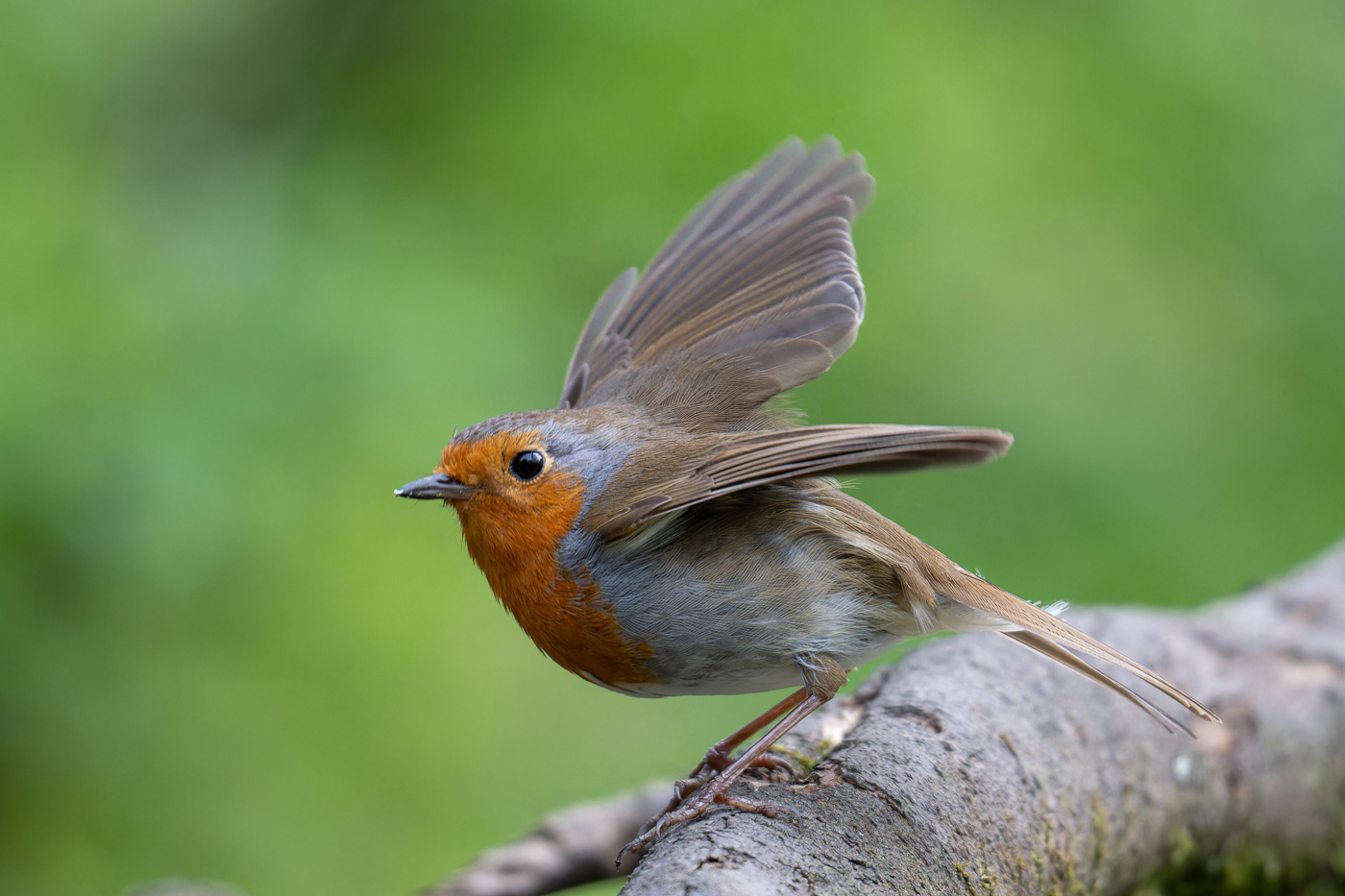
Robin readying to fly captured with Z 180-600mm f/5.6-6.3 VR at 600mm. Camera settings 1/2000 sec. f/6.3 ISO 4500
Size and weight is where the Z8 vs Z9 differ most and thanks to the Z9’s integrated battery grip it gets longer battery life as mentioned, and vertical mode is of course built in. The Z9 also includes two XQD/CFexpress high-speed memory card slots and a voice memo mic, which can save you time when shooting professional events.
The deeper Z8 grip allows you to hold the camera securely with one hand and it’s worth noting that the body is 15% smaller than the D850’s, while the omission of a battery grip makes it a whopping 30% smaller than the Z9.
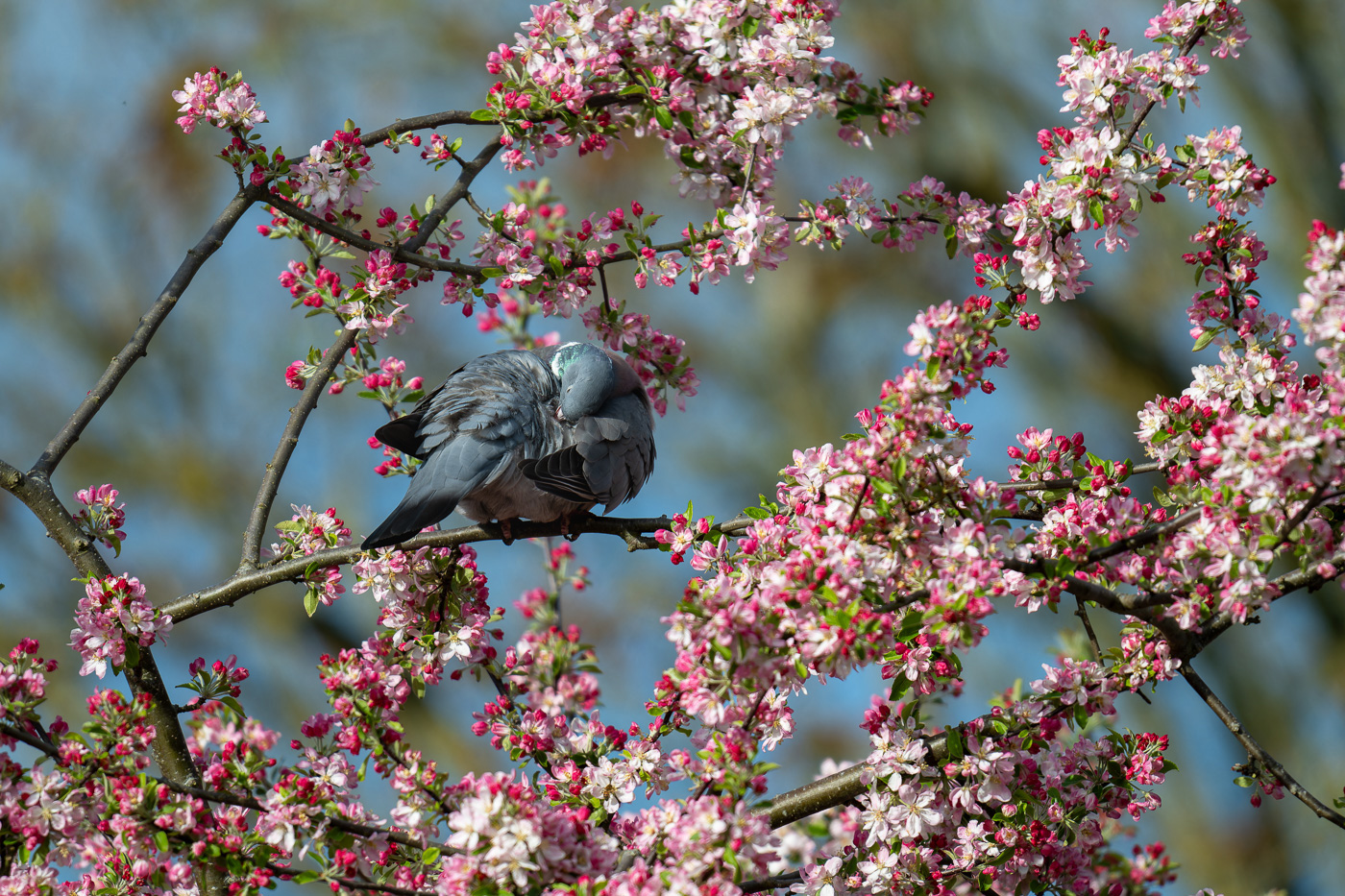
Wood pigeon in blossom captured with Z 180-600mm f/5.6-6.3 VR at 600mm. Camera settings 1/2000 sec. f/6.3 ISO 500
Is it worth upgrading from the D850 to Z8?
The mirrorless Z8 body offers numerous advantages when compared to the D850, which is an impressive camera in its own right. Perhaps most notably AF has moved on significantly with deep learning subject recognition, which is incredibly effective, accurate and sticky on the subject as it moves around.
You also gain faster shooting speeds with class-leading burst rates and an incredibly deep buffer, not to mention in-body stabilisation for sharp results at far slower shutter speeds, especially when paired with compatible mirrorless Z lenses using SYNCRO VR.
The D850 does offer seriously impressive battery life and an optical viewfinder, which some users prefer, however the Z8’s bright 3000cd/m2 OLED electronic viewfinder has ZERO lag and no blackout for a closer optical viewfinder experience. It also boasts 120fps refresh rate, which is easy on the eye and effective with distant subjects.
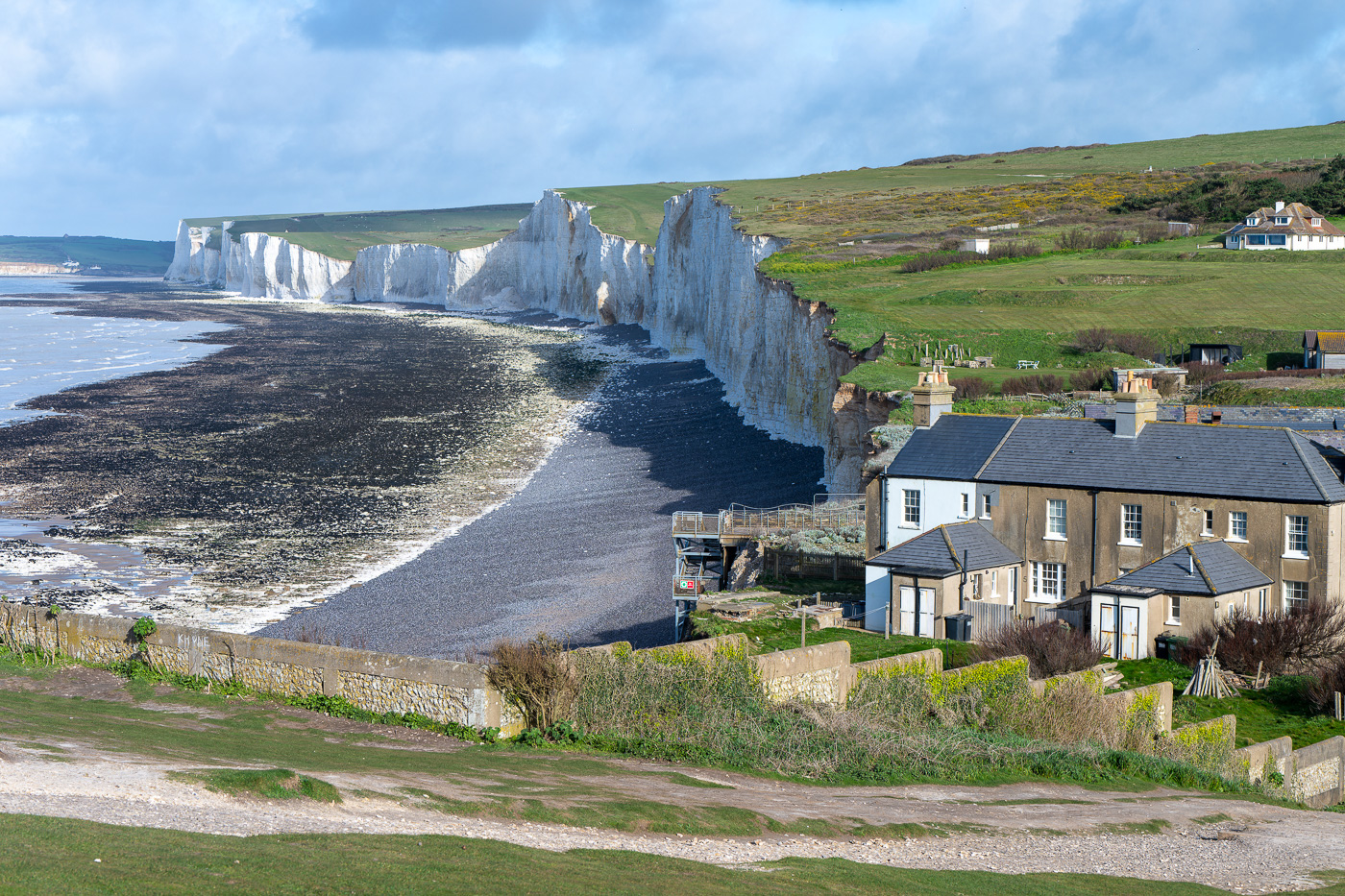
Landscape photo captured with the Z 70-180mm f/2.8 at 70mm. Camera settings 1/320 sec. f/6. ISO 140
Is the Nikon Z8 silent?
Yes, the Z8 operates in total silence due to its lack of a mechanical shutter. I found it helpful to assign a sound to the nonexistent shutter click to confirm it was capturing shots, but complete silence can be beneficial in situations such as weddings, events, and for wildlife.
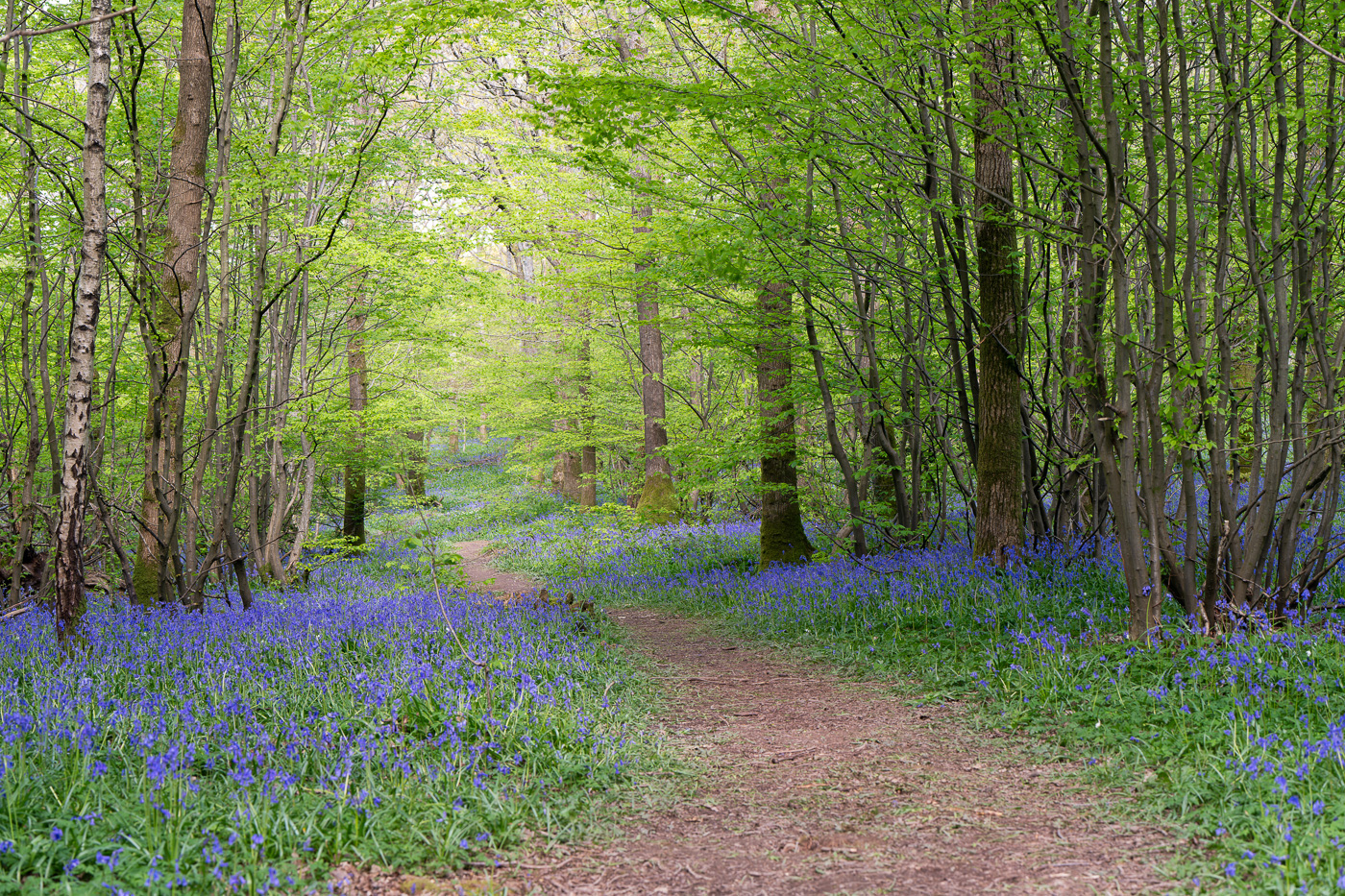
Bluebell landscape captured with the Z 70-180mm f/2.8 at 74mm. Camera settings 1/10 sec. f/8. ISO 200 (handheld - thanks to great VR)
Burst shooting
High-speed continuous burst mode is impressive, allowing you to capture a vast number of shots thanks to a substantial buffer capacity. This is particularly advantageous for sports, wildlife, and other fast-paced subjects where critical moments are fleeting, and one area where the Z8 differentiates itself from the Z7 II and other models.
Shooting at 20fps for extended periods fills memory cards incredibly quickly and I found myself importing 1000’s of images after some sessions. If you do plan on photographing in continuous burst be prepared to buy several high-capacity CFexpress memory cards (Type B), and use fast SD cards as backup or redundancy.
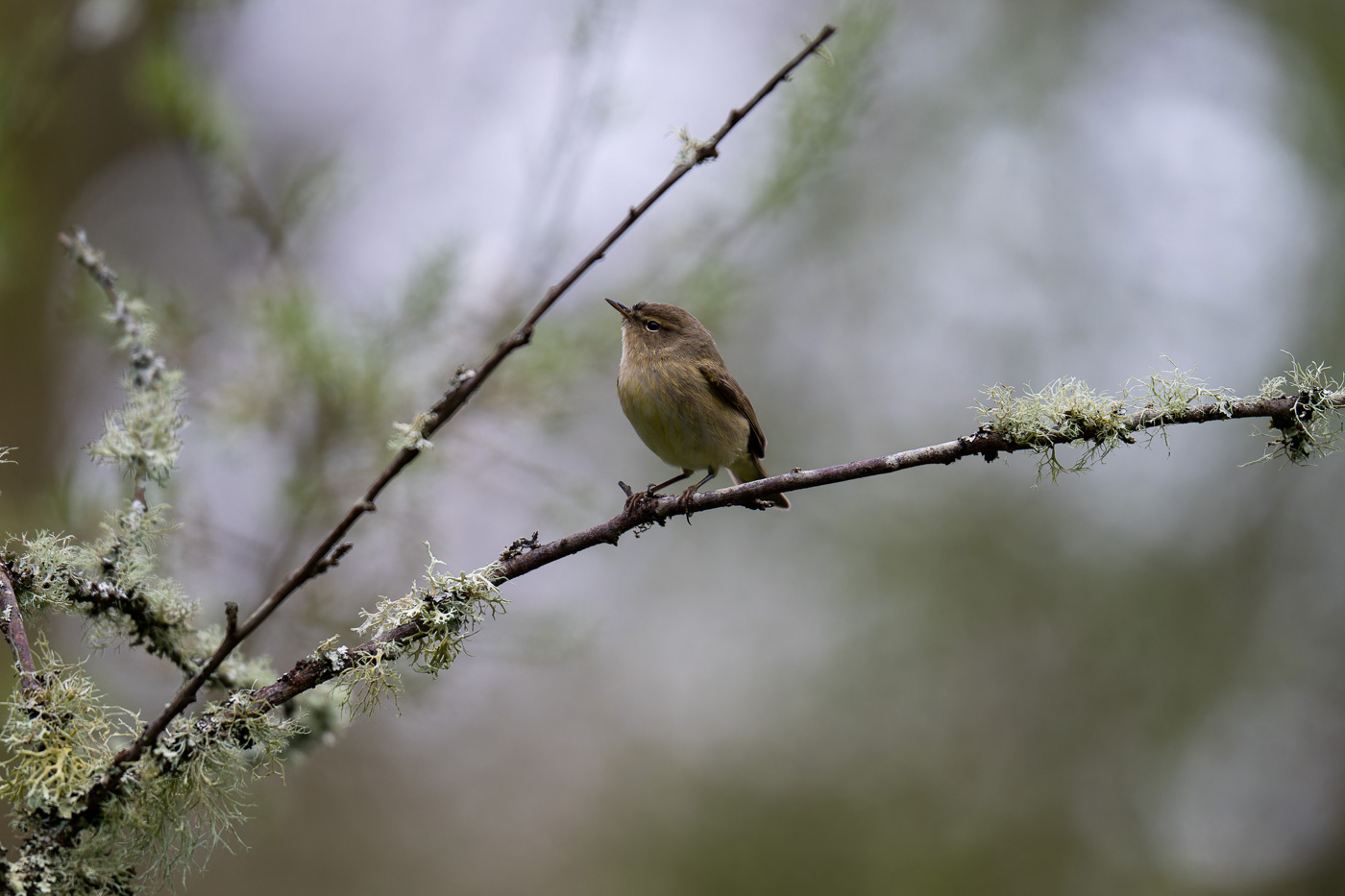
Wren bird I think captured with Z 180-600mm f/5.6-6.3 VR at 600mm. Camera settings 1/2000 sec. f/6.3 ISO 2,000
Does Nikon Pre-Release Capture work well?
I experimented with Nikon's Pre-Release Capture a few times. Once activated through the menu, it kicks in when shooting at 30fps or higher, however it currently supports only JPEG format. Although this usually suffices I was at ISO 20,000 and above due to low light, and the noise levels were less than ideal in these situations.
The Pre-Release Capture feature did prove capable of capturing moments such as small birds taking flight from a perch, moments which I would have otherwise often missed. It's a remarkable technology, and I'm excited to see its performance in brighter conditions and, hopefully soon, with support for RAW files.

Flower close-up captured with the Z 70-180mm f/2.8 at 145mm. Camera settings 1/1250 sec. f/2.8. ISO 450. Strange spring this year with wild garlic, bluebells and wood anemones at the same time!
Is the Nikon Z8 AF good?
Yes, the Nikon Z8 boasts excellent autofocus (AF) performance, and having shot 1000s of frames, from small birds to various other subjects, I can confidently say that its AF system is outstanding. It features robust subject detection and tracking capabilities, and while no system is flawless, the Z8 consistently allowed me to capture many sharp keepers.
I tested the camera's AF subject detection on small birds obscured behind branches, and it effectively bypassed obstacles most of the time. For those who rely heavily on autofocus, delving into and fine-tuning deeper AF settings is highly beneficial to fully leverage the camera's capabilities, but it does a stellar job straight out of the box.
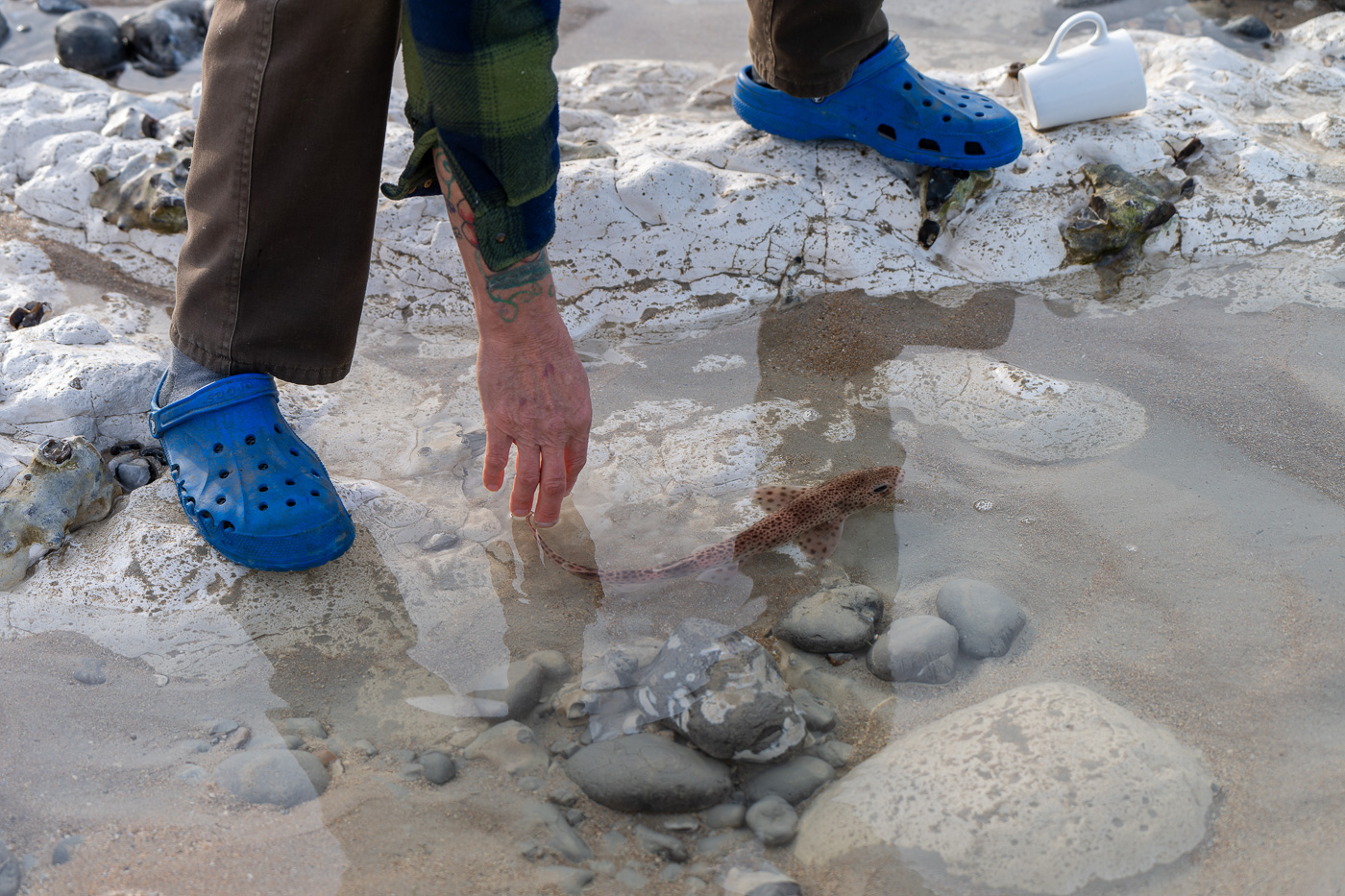
Releasing dogfish, captured with the Z 70-180mm f/2.8 at 70mm. Camera settings 1/320 sec. f/4. ISO 110
Is the Z8 good for landscape photography?
Yes, the Z8 excels in landscape photography with impressive dynamic range, vibrant colours, and flexible RAW files for post-processing. Nikon's colour science seems to have evolved from earlier mirrorless models, enabling the Z8 to produce clear and detailed images, with bright natural colours rendered.
Having 45 megapixels also helps with landscape photography, as it does for wildlife, facilitating more aggressive cropping while still maintaining decent resolution for screen and print.
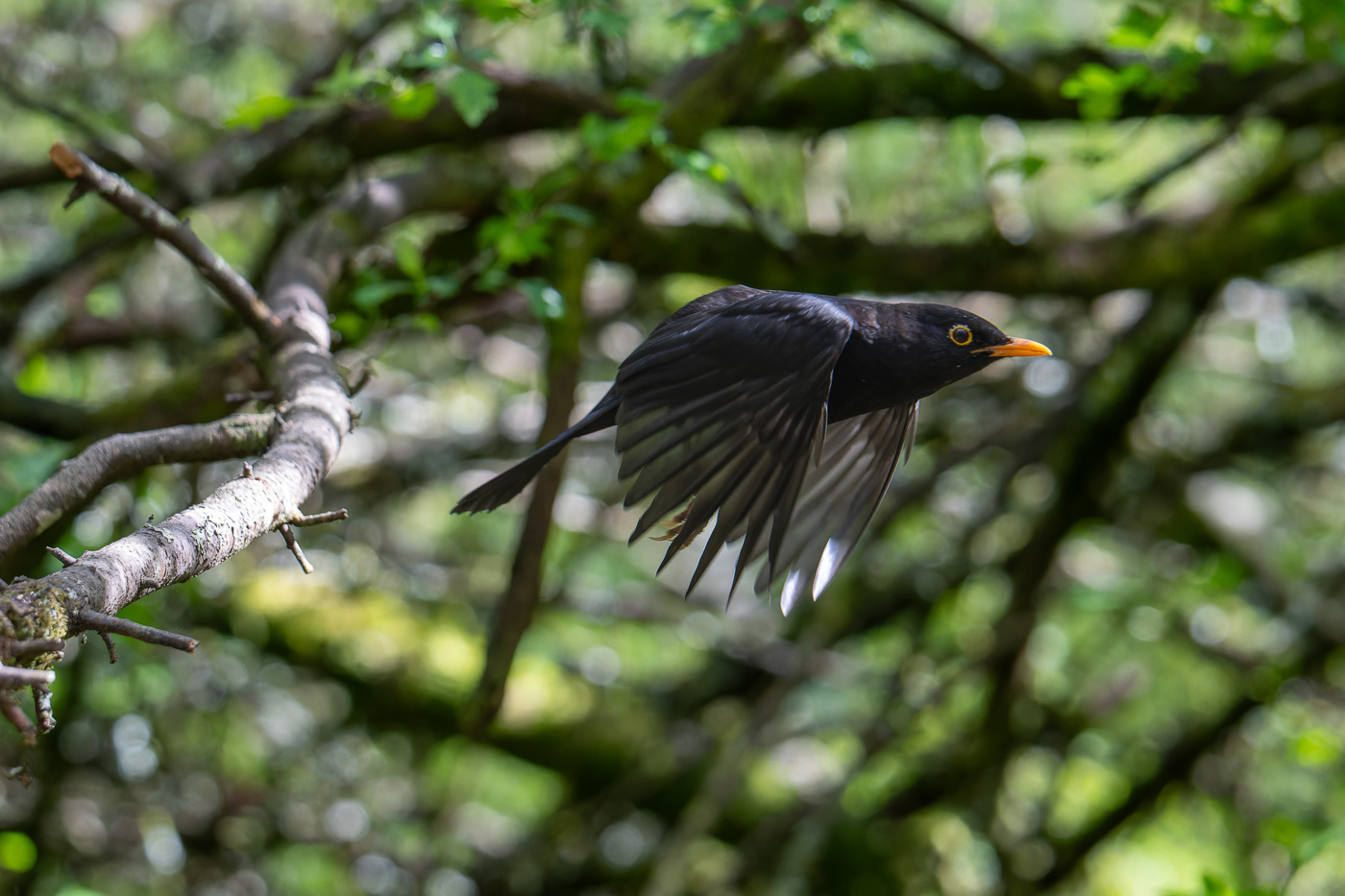
Blackbird in flight captured with Z 180-600mm f/5.6-6.3 VR at 280mm. Camera settings 1/2000 sec. f/5.6 ISO 3,600
Which is better the Z8 or Z7 II?
The Z8 is unquestionably a more rounded camera, with newer autofocus, faster bursting and better video performance. If you capture predominantly static subjects such as still life or landscapes the Z7 II will be perfect for your needs, however if you also shoot faster moving subjects, go for the Z8.
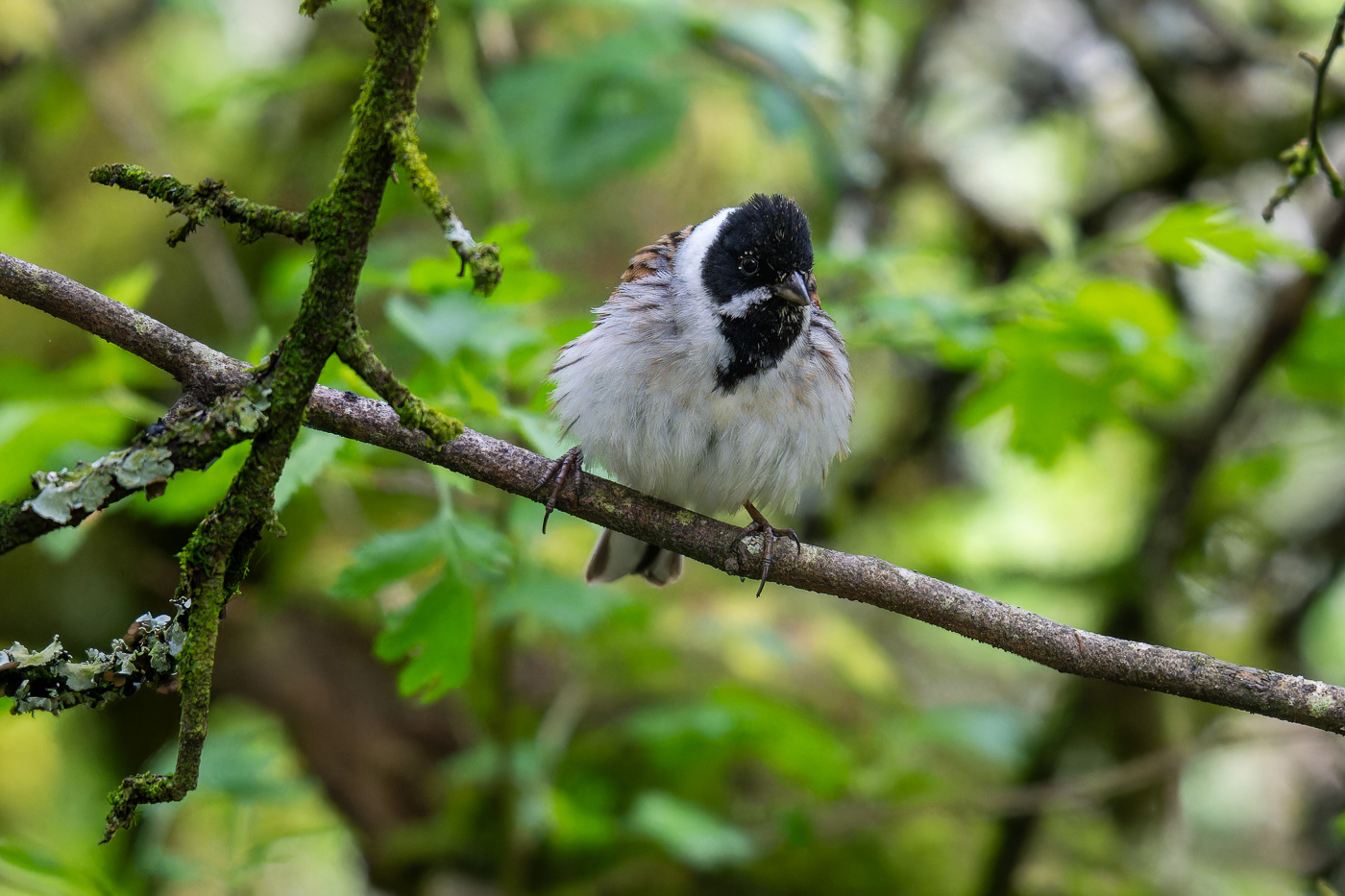
Bird puffed up captured with Z 180-600mm f/5.6-6.3 VR at 560mm. Camera settings 1/1000 sec. f/6.3 ISO 6,400
Z lenses
For the duration of this review either the Nikon Z 180-600mm f/5.6-6.3 VR or the Nikon Z 70-180mm f/2.8 lens were used, both of which offer fabulous results. They form just two of numerous options now available, having grown exponentially since launching in 2018.
If you’re joining from an F-mount bayonet you can use the second-generation FTZ Mark II Mount Adapter, which is really comfortable and works on just about any F-mount DSLR lens. Native Z mount lenses are well worth moving to as soon as possible due to their advantages, such as combined lens and body stabilisation, barrel controls and blistering AF performance.
The best lens options depend on subject, but some of our favourites include the premium S-series holy trinity:
Between these three lenses you can capture subjects from near to far, with a fast aperture plus excellent stills and video capabilities, all derived from the super-wide Z mount.
There are excellent specialist optics too, such as the Nikon Z 105mm F/2.8 VR MC S Lens for macro images, while dedicated sports and wildlife lenses include the Nikon Z 400mm F/2.8 TC VR S with Built In 1.4x TC and the Nikon Z 100-400mm F/4.5-5.6 S zoom. You can learn more about super tele options in our Nikon Z Super Telephoto Lens Comparison, as well as the Nikon Z 800mm F6.3 lens in detail.
Third party manufactures include Voigtlander and Laowa, while both Sigma and Samyang have begun to release Z mount options to choose from.
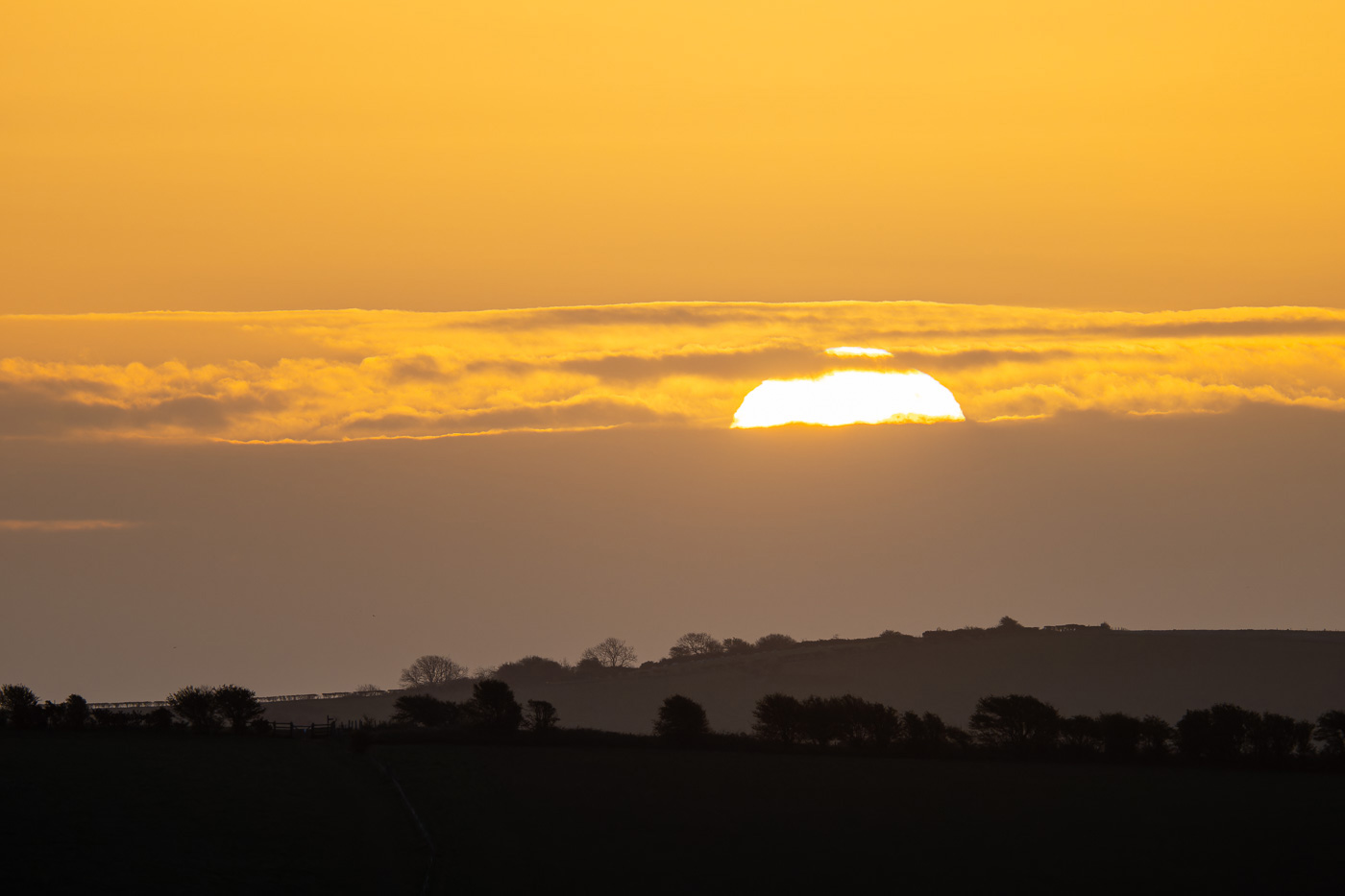
My favourite time of day captured with Z 180-600mm f/5.6-6.3 VR at 600mm. Camera settings 1/1500 sec. f/6.3 ISO 640
Best Nikon Z8 accessories
Photographers and video creators rely on camera accessories in order to draw out the best quality from content and the Z8 offers plenty of opportunities for add-ons, including a USB-C Nikon Remote Grip MC-N10 for easy to reach remote control while capturing videos.
Although you can use UHS II SD cards, a CFexpress card like the Lexar Professional 128GB CFexpress Type B Card Gold Series gives you incredibly fast speeds of up to 1750MB/s read and up to 1500MB/s write, which helps to keep up with 8K video and fast high resolution burst rates.
Nikon is partnered with Rode and Sennheiser, but you can mount virtually any on-camera microphone, such as a Saramonic Vmic5 Pro On-Camera Supercardioid Shotgun Mic or a cost-effective wireless system such as the Hollyland Lark M1 DUO.
As with mics, you can also mount virtually any Nikon fit flashgun from the flagship wireless Nikon SB-5000 or the Profoto A10 for Nikon, to lower cost alternative from other brands.

Great tit bird captured with Z 180-600mm f/5.6-6.3 VR at 500mm. Camera settings 1/2000 sec. f/6.3 ISO 3,600
Who is the Nikon Z8 for?
The Nikon Z8 is particularly well suited to those who need a combination of speed and image quality, regardless of specialising in stills, video or both. This is a noteworthy hybrid camera for:
- Weddings / Portraits
- Fashion / Lifestyle
- Corporate / Events
- Documentary and independent filmmaking
- Wildlife
- Landscape / Astro
The Z8 is exceptionally capable and could easily serve as a backup body for professional photographers who use the Z9 but require a lighter alternative without sacrificing performance.
For the rest of us, it presents a highly attractive option as a primary camera body. As the mirrorless ecosystem expands and continues to benefit from ongoing technological advancements, there's every reason to consider transitioning from a DSLR or upgrading from a Z6 or Z7 series I or II.
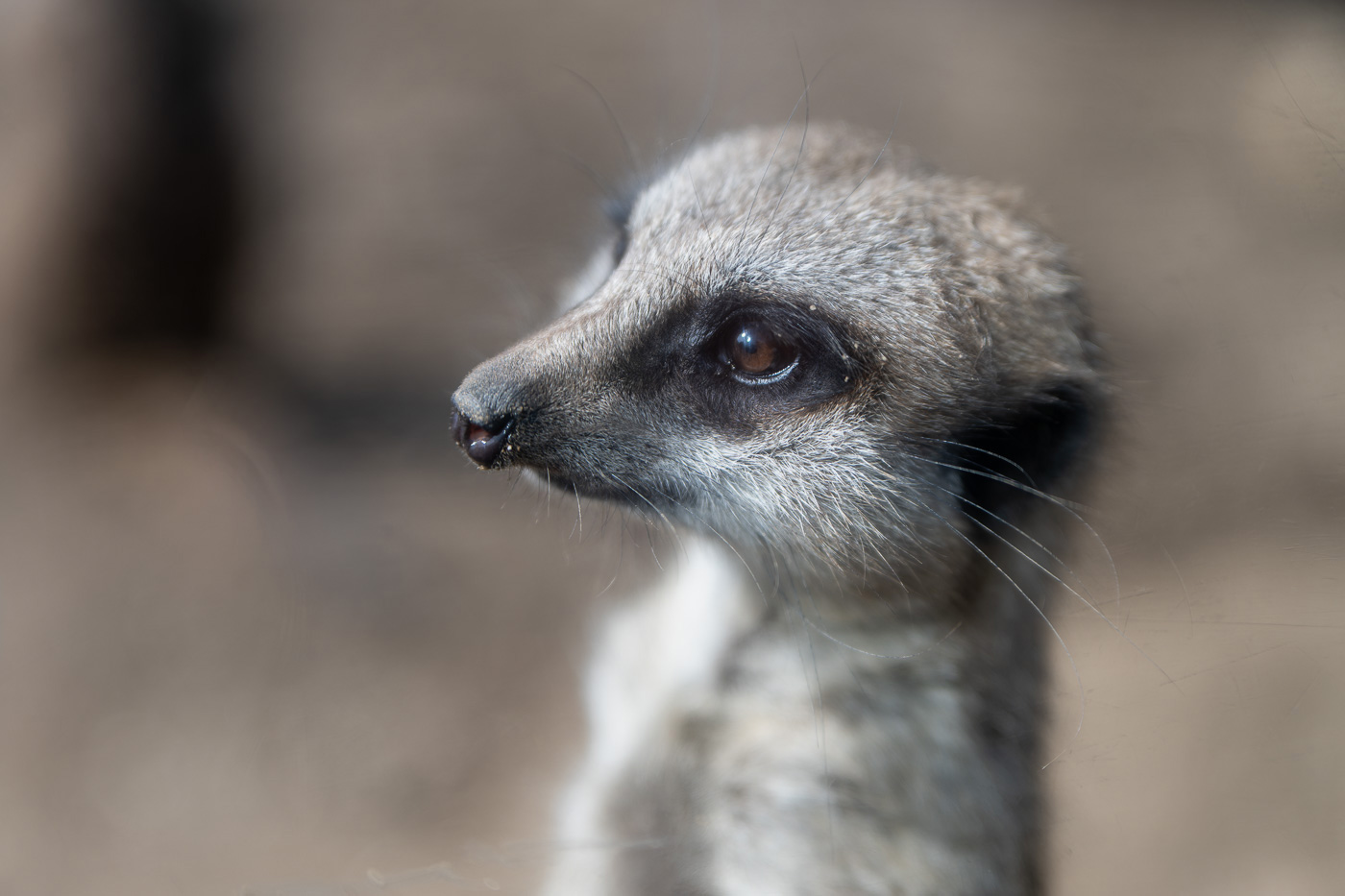
Critter captured with Z 70-180mm f/2.8 at 70mm. Camera settings 1/1500 sec. f/2.8 ISO 100
Conclusion
Starting out with enthusiasm for the Z8, I ultimately ended disappointed – disappointed that I had to return such an incredible camera! It inspired daily shooting, which is exactly what you want from a creative tool.
Right out of the box the Z8 performs brilliantly. While it's a bit larger than what's typical in the mirrorless world, it comes packed with professional features suitable for both stills and video. Nikon’s menu systems are intuitive, the camera ergonomics feel natural, and the screens facilitate fast, blackout-free shooting and easy articulation.
If your budget allows and you're considering this model, either from a DSLR or as an upgrade it comes very highly recommended. Don't forget to check our inventory of used Nikon cameras to see if one is available. If not, opting for a new Nikon Z8 is a great choice that will certainly inspire your photography for years to come.
Share this post:
By Nick Dautlich on 25/04/2024
Nick Dautlich
Senior Content Writer and Product Reviewer
Nick Dautlich is the Senior Content Writer and Product Reviewer at Park Cameras, with over 15 years of photography experience. A Sony Imaging Professional and expert reviewer, Nick has worked with major brands such as Canon, Sony and Nikon. His work is also featured on Vanguard World UK’s website, Capture Landscapes, and Shutter Evolve. Nick’s photography includes National Trust projects and magazine covers and he is passionate about landscapes and storytelling. Nick also enjoys hiking and teaching his children about nature. Learn more on his profile page.

Trade in your old equipment
Fast and easy trade in service ensures your old gear is collected efficiently and you are paid quickly! It's very simple to trade in your unwanted photography gear. Just head over to our dedicated Sell or Part Exchange page, fill out the details, and we'll get back to you with an offer for your old gear. Take the cash, or put it towards the cost of your new gear. It's up to you! Find out more
sign up to the newsletter
Keep up to date on the latest photography news, events and offers. Sign up now
